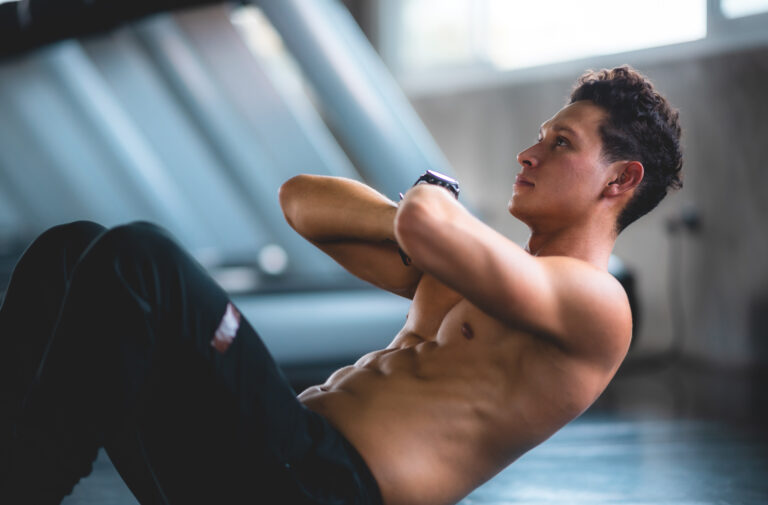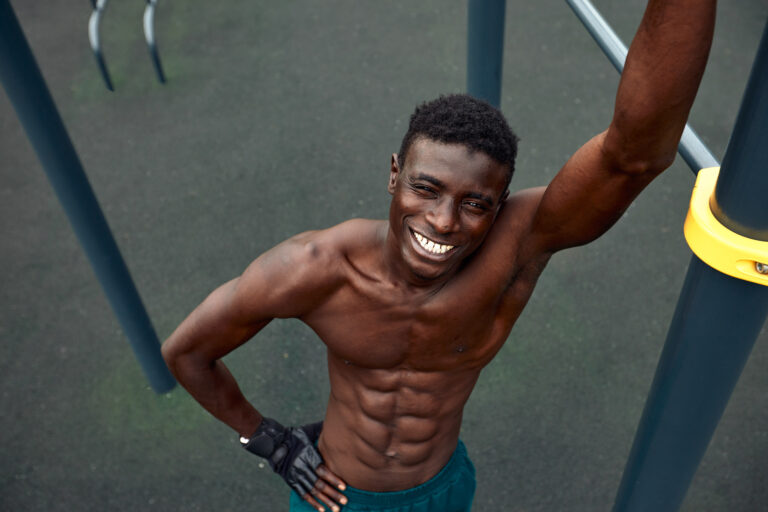What is the Platysma?
The platysma muscle, though often overlooked, plays a significant role in both facial aesthetics and neck mobility. Situated in the superficial layer of the anterior neck, it impacts expressions and neck movements, making it a key muscle for fitness enthusiasts and professionals alike. Understanding the intricacies of the platysma can enhance training routines and improve aesthetic outcomes, ensuring a well-rounded approach to fitness and health.
Anatomical Description
The platysma is a broad, thin sheet of muscle situated in the superficial layer of the neck. Originating from the fascia covering the pectoralis major and deltoid muscles, it extends upward to insert into the lower border of the mandible and the skin of the lower face. This extensive coverage allows the platysma to influence both the neck and facial regions.
Innervated by the cervical branch of the facial nerve (cranial nerve VII), the platysma plays a crucial role in facial expressions. Its primary function is to draw the lower lip and corners of the mouth downward, contributing to expressions of sadness or fear. Additionally, the platysma tenses the skin of the neck, which can be particularly noticeable during actions like shaving or when expressing intense emotions.
The platysma’s anatomical relationship with surrounding structures is significant. It lies superficial to the sternocleidomastoid muscle and overlaps with other important muscles in the neck. This positioning means that the platysma can affect the appearance and movement of the neck and lower face. Its extensive area and superficial placement make it an important muscle to consider in both medical and fitness contexts.
Physiological Functions
The platysma’s primary physiological function is facilitating facial expressions, particularly those that convey negative emotions such as sadness or fear. When the platysma contracts, it pulls the lower lip and corners of the mouth downward, creating a frown or grimace. This action is crucial for non-verbal communication and plays a role in social interactions.
Beyond facial expressions, the platysma also contributes to neck movements. It assists in depressing the mandible, allowing for movements such as opening the mouth. Additionally, by tensing the skin of the neck, the platysma can help in various neck movements and in maintaining the structural integrity of the neck region during physical activities.
Another important function of the platysma is its role in venous return from the face and neck. By tensing and relaxing, the platysma aids in the return of blood to the heart, particularly during vigorous physical activities. This function highlights the platysma’s contribution to overall cardiovascular health and its integration into the body’s complex system of muscle interactions.
Platysma in Fitness and Exercise
The relevance of the platysma in fitness and physical training is often underestimated. However, targeted exercises can enhance its strength and tone, contributing to a more youthful appearance and improved neck function. Strengthening the platysma can help in reducing the appearance of sagging skin and wrinkles in the neck and lower face.
One effective exercise for the platysma is the “neck curl.” This involves lying on your back with your head hanging off the edge of a bench or bed, then curling your head forward, bringing your chin towards your chest. This movement targets the platysma along with other neck muscles, promoting overall neck strength and stability. It is recommended to perform this exercise with proper form to avoid strain and injury.
Another useful exercise is the “platysma stretch.” This can be done by sitting or standing upright and tilting your head back, then opening and closing your mouth repeatedly. This action stretches the platysma and helps in maintaining its elasticity. Including such exercises in a regular fitness routine can contribute to a well-toned neck and lower face.
It is important to approach platysma exercises with caution. Overtraining or improper techniques can lead to strain or injury. Consulting with a fitness professional or physical therapist can ensure that exercises are performed correctly and safely. Incorporating platysma-focused exercises into a comprehensive fitness regimen can yield both functional and aesthetic benefits, enhancing overall physical health and appearance.
Clinical Significance
The platysma is associated with several clinical conditions and issues that can impact its function and appearance. One common issue is platysma banding, which occurs when the muscle becomes more prominent due to aging or weight loss, creating visible vertical bands in the neck. This condition can affect both the function and aesthetics of the neck and lower face.
Treatment options for platysma banding include both surgical and non-surgical approaches. Botox injections can be used to relax the platysma muscle, reducing the appearance of bands. This non-invasive treatment is popular for its quick results and minimal downtime. Surgical options, such as a neck lift, can provide more permanent results by tightening the muscle and removing excess skin.
The platysma also plays a role in certain medical diagnostics and surgical procedures. For example, during a carotid endarterectomy, a surgical procedure to remove plaque from the carotid artery, the platysma must be carefully managed to access the underlying structures. Understanding the platysma’s anatomy and function is crucial for surgeons to avoid complications and ensure successful outcomes.
In addition to cosmetic concerns, the platysma can be involved in medical conditions such as neck spasms or dystonia. These conditions can cause involuntary contractions of the platysma, leading to discomfort and functional impairments. Treatment options include physical therapy, medications, and in some cases, surgical intervention to address the underlying cause.
Aesthetic Importance
The platysma muscle is a significant factor in facial and neck aesthetics. Its condition can greatly affect the overall appearance of the neck and lower face, making it a focal point for cosmetic treatments and procedures. A well-toned platysma can contribute to a youthful and firm appearance, while issues such as platysma banding can detract from one’s aesthetic appeal.
Various aesthetic treatments target the platysma to enhance its appearance. Botox injections are commonly used to relax the muscle and smooth out wrinkles and bands. This treatment is particularly effective for those seeking a non-surgical option with minimal recovery time. The results can last several months, making it a popular choice for maintaining a youthful neck and lower face.
Surgical options, such as a neck lift or platysmaplasty, can provide more dramatic and long-lasting results. These procedures involve tightening the platysma muscle and removing excess skin to create a smoother and more contoured neck. While these surgeries require a longer recovery period, they offer significant improvements in both function and appearance.
Incorporating platysma-focused exercises into a regular fitness routine can also support aesthetic goals. By maintaining the muscle’s strength and elasticity, individuals can reduce the likelihood of sagging skin and wrinkles. This proactive approach to fitness can complement other aesthetic treatments and contribute to a well-rounded appearance.
Age-Related Changes and Management
As individuals age, the platysma muscle undergoes various changes that can impact both its function and appearance. The muscle may lose tone and elasticity, leading to sagging skin and the development of vertical bands. These changes can be exacerbated by factors such as sun exposure, smoking, and weight fluctuations.
To manage age-related changes in the platysma, it is important to incorporate specific exercises into a fitness routine. Regularly performing neck curls and platysma stretches can help maintain muscle tone and prevent sagging. Additionally, maintaining overall skin health through proper hydration, sun protection, and a balanced diet can support the appearance of the platysma and surrounding areas.
For those seeking more immediate or dramatic results, aesthetic treatments such as Botox or surgical interventions may be considered. These options can effectively address issues such as platysma banding and loose skin, providing a more youthful and contoured appearance. Consulting with a qualified professional can help determine the most appropriate treatment based on individual needs and goals.
It is also important to recognize the role of general fitness in supporting the platysma and other muscles. Regular exercise, including cardiovascular and strength training activities, promotes overall muscle health and function. By integrating platysma-specific exercises into a comprehensive fitness routine, individuals can enhance both the aesthetic and functional aspects of the neck and lower face.
Taking a proactive approach to platysma care can yield significant benefits, particularly as individuals age. By maintaining muscle tone and addressing aesthetic concerns, individuals can enjoy a more youthful appearance and improved neck function. This holistic approach to fitness and health ensures that the platysma, along with other muscles, remains strong and functional throughout the aging process.
Key Takeaways
The platysma muscle, though often overlooked, plays a crucial role in both facial expressions and neck movements. Understanding its anatomy, functions, and significance in fitness and aesthetics can enhance training routines and improve aesthetic outcomes. By incorporating platysma-focused exercises and treatments into a comprehensive fitness regimen, individuals can achieve a more youthful appearance and improved neck function. Maintaining the platysma’s strength and elasticity is essential for overall physical health and aesthetic appeal, particularly as individuals age.









